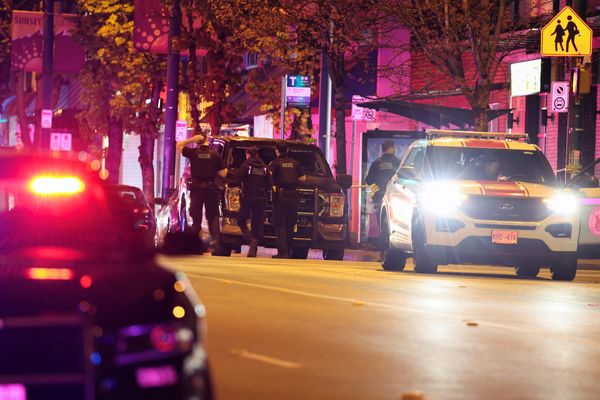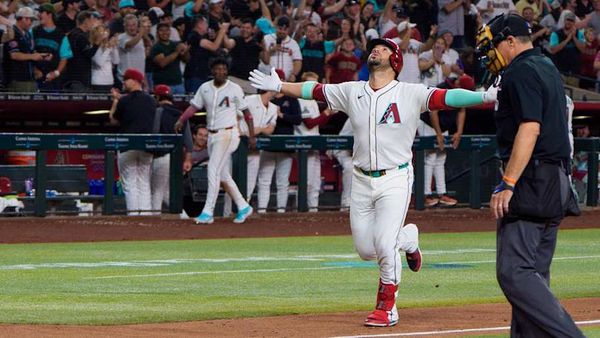
The Spanish Grand Prix is one of the oldest in Formula 1 history and yet only 13 Spaniards have started a world championship race.
Spain is one of the superpowers in motorcycle racing, but it’s a different matter when it comes to F1. Only eight Spanish drivers have scored points in the championship and just one has stood on the top step of the podium.
Sportscar driver Alfonso de Portago was the first Spaniard to score an F1 podium, albeit in a shared drive with Peter Collins in the 1956 British GP, but he only made five championship starts before being killed in the 1957 Mille Miglia. Since then, Spanish participation has been sparse.
Here are Autosport’s top five Spanish F1 drivers. Our ranking is based on what they achieved in F1, factoring in the cars at their disposal.
5. Luis Perez-Sala

Years: 1988-89
Starts: 26
Best finish: 6th
Podiums: 0
Best qualifying: 9th
Titles: 0
In an era when F1 grids were big enough to accommodate several new rookies each season, Perez-Sala’s addition in 1988 with Minardi was entirely merited. The Catalan, who just pips Marc Gene in our list, had shone in F3000 in 1986 and 1987, scoring a total of four wins and finishing runner-up in the latter season with the works Lola team.
As an F1 newcomer, Perez-Sala lined up at Minardi alongside the late Adrian Campos, who had been blown away by team-mate Alessandro Nannini in his own rookie season in 1987. Perez-Sala too thoroughly trounced Campos, including a fine 15th on the grid for Monaco (his third GP), and the slower Spaniard was replaced by Pierluigi Martini after five rounds.
Martini had struggled in F1 with Minardi in 1985 before dropping into F3000 and proving equally matched when partnering Perez-Sala at the Pavesi Ralt team in 1986. He had his own F1 career to rebuild, and did so to spectacular effect in 1989 with his famous run of end-of-season giantkilling performances.
That overshadowed his team-mate, but Perez-Sala was good enough to score his sole F1 point for sixth at Silverstone, just six seconds behind fifth-placed Martini. Still, he was out of a drive for 1990.
In the 1990s, Perez-Sala became a frontrunning fixture of Spain’s Super Touring era with the works Nissan squad, and returned to the forefront of F1 in late 2011 as principal of the disastrous HRT team founded by Campos. That was just after his nephew, Daniel Juncadella, won the Macau Grand Prix!

Years: 2009-11
Starts: 46
Best finish: 7th
Podiums: 0
Best qualifying: 6th
Titles: 0
A Red Bull junior, Alguersauri was the reigning British F3 champion and competing in Formula Renault 3.5 when he was called up to replace Sebastien Bourdais at Toro Rosso in 2009. He became the youngest driver to start a world championship race, a record later taken by Max Verstappen, when he contested the Hungarian GP.
Alguersuari failed to score any points over eight starts that year but was retained alongside Sebastien Buemi for 2010. Alguersuari scored his first points in April’s Malaysian GP and the team-mates were evenly matched. Buemi finished ahead in the table but Alguersuari arguably had the upper hand in the closing stages of the campaign.
Buemi was marginally ahead in qualifying in 2011 but suffered some misfortune and Alguersuari often raced well. That meant he finished ahead in the championship, 14th to Buemi’s 15th.
Sevenths in Italy and Korea were his best results and the latter was perhaps Alguersuari’s finest F1 drive. Neither driver, however, had done enough to convince the team they had to stay and were replaced by Daniel Ricciardo and Jean-Eric Vergne for 2012.
A disenchanted Alguersuari contested the inaugural Formula E season, taking a best finish of fourth, before retiring from motorsport for good in 2015 at the age of 25 to focus on his career as a DJ.

Years: 1999-2002, 2005-06, 2010-12
Starts: 104
Best finish: 2nd
Podiums: 1
Best qualifying: 4th
Titles: 0
De la Rosa’s junior career was an interesting one and included titles in Japanese F3 in 1995, Formula Nippon (now known as Super Formula) in 1997 and that year’s All-Japan GT Championship (now Super GT) with Michael Krumm.
After being a test driver for Jordan in 1998, de la Rosa scored a point on his F1 debut with Arrows in the 1999 Australian GP. That was his only point of the season but he stayed for 2000, Jos Verstappen replacing Tora Takagi as his team-mate.
Verstappen beat de la Rosa in the standings, but it was a solid line-up and lifted Arrows from ninth in the constructors’ championship to seventh.
De la Rosa joined Eddie Irvine at Jaguar for 2001. He struggled to match the four-time GP winner and lost his place at the troubled team at the end of the following year.
De la Rosa then became McLaren test driver, a role he kept for seven years. When Juan Pablo Montoya was injured ahead of the 2005 Bahrain GP, de la Rosa finally got to race a frontrunning F1 car. He took the MP4-20 to fifth and set fastest lap, though finished more than half a minute behind team leader Kimi Raikkonen.
“Pedro was so in tune with the car and the challenges we faced, he would often call me at home, having reflected on a recent track or simulator test, to discuss the correlations,” recalls Mark Williams, former head of vehicle engineering at McLaren. “He was so committed to improving the car.
“At Bahrain he gave it everything. After the race he called me and said, ‘The car was fantastic, I really enjoyed myself, now I am a very happy man’.”
When a disgruntled Montoya left midway through 2006, de la Rosa again stepped up. Although not a match for Raikkonen, he was a consistent points threat and scored his sole F1 podium with second in tricky conditions at the Hungaroring, on a day his team-mate crashed.
De la Rosa returned to life as a test driver before his competition comeback with Sauber in 2010. He did a solid job alongside Kamui Kobayashi and the car improved as the season went on, but de la Rosa was replaced by Sauber favourite Nick Heidfeld before the end of the campaign.
His rollercoaster F1 ride continued when he was again called up for a one-off, this time to replace the injured Sergio Perez at Sauber for the 2011 Canadian GP, but finished outside the top 10.
De la Rosa’s final F1 season as a racer came with the Spanish HRT team in 2012. Now into his 40s, de la Rosa tried hard and generally outperformed team-mate Narain Karthikeyan, but the car was woefully uncompetitive and HRT folded after the end of the season.
De la Rosa’s role was then confined to test and development duties, first with Ferrari and then in Formula E, but he is one of only three Spaniards to have started more than 100 world championship races.
2. Carlos Sainz

Years: 2015-present
Starts: 145
Best finish: 2nd
Podiums: 9
Best qualifying: 2nd
Titles: 0
It would be outrageous if Sainz didn’t become the second Spanish driver to win a world championship grand prix. His nine podiums put him tied for fifth in the list of most top-threes without a victory and he has been an impressive performer in recent years.
Sainz had a mixed record on his way up the junior categories, struggling in F3 and GP3 but winning the 2014 Formula Renault 3.5 title.
He entered F1 with Toro Rosso the following year as fellow rookie Max Verstappen’s team-mate. Verstappen scored more points, but much of the gap was down to car unreliability and Sainz beat Verstappen 10-9 in qualifying.
After Verstappen was promoted to Red Bull for round five of 2016, Sainz comfortably outperformed new team-mate Daniil Kvyat. He was also brilliant in 2017, his seventh place in the Chinese GP being one of the best drives of the season, and he was ninth in the standings.
Sainz felt his future had to be outside of the Red Bull fold and switched to Renault for the last four races of 2017. He was outperformed by team-mate Nico Hulkenberg in 2018 but seemed to gel better with McLaren when he joined for the following season.
He helped rebuild the beleaguered team alongside rookie Lando Norris and was often the best of the midfield runners behind the frontrunning Mercedes, Ferrari and Red Bull drivers. He finally got his long-deserved first podium on his 101st start at the Brazilian GP following a penalty for Lewis Hamilton.
Sainz’s 2021 move to Ferrari was announced before the start of the belated 2020 campaign. Pushed hard by Norris, Sainz still starred and fell just 0.4 seconds shy of his first victory at Monza.
Sainz impressed at Ferrari in his first year. Although team-mate Charles Leclerc’s peaks were higher, Sainz narrowly beat him in the standings and scored four podiums.
The Ferrari F1-75 is the best car Sainz has yet had in F1, but he has struggled to get on terms with Leclerc. It remains to be seen whether he can be a number one driver for a top team or is a very strong number two.

Years: 2001, 2003-18, 2021-present
Starts: 338
Wins: 32
Podiums: 98
Poles: 22
Titles: 2 (2005-06)
One of the most obvious number ones in list-making history! Not only is Alonso the only Spanish driver to have taken an F1 victory, he is sixth on the all-time list with 32 wins and is a double F1 champion.
Alonso’s rise was rapid. He starred for Minardi in his first F1 season (just his third in car racing), was Renault test driver in 2002, then took his first victory for the French manufacturer in the 2003 Hungarian GP.
He was sixth in the standings, improved to fourth in 2004 despite no wins, then started 2005 with three victories in the first four races. Alonso underlined his status as one of the greatest drivers of his generation by conducting a brilliant campaign against the rapid McLarens to take his first F1 title.
PLUS: Fast failure – the 2005 McLaren
Alonso then defeated seven-time champion Michael Schumacher in 2006 for his second crown before joining McLaren. Thanks to a tight and sometimes controversial contest with rookie team-mate Lewis Hamilton, both McLaren drivers lost out to Raikkonen and Alonso rejoined Renault.
Since then, Alonso has consistently had to battle with F1 machinery that isn’t the best. He managed two victories for Renault in 2008, suffered a winless 2009 and joined Ferrari for 2010.

Alonso, who almost single-handedly boosted F1’s popularity in Spain, was arguably at his peak during his time at Maranello but Ferrari was never quite able to give him a car to beat Red Bull. Alonso famously lost out to Sebastian Vettel at the 2010 finale in Abu Dhabi and fell three points short in 2012 after one of the finest campaigns in F1 history.
PLUS: Fernando Alonso’s greatest F1 drives
Ferrari’s first turbo-hybrid car was not competitive in 2014 and Alonso made a return to McLaren. The McLaren-Honda programme was, however, a disaster and Alonso had to perform heroics just to get into the points.
During those struggles, he looked elsewhere as he searched for motorsport’s triple crown of wins in the Monaco GP, Indianapolis 500 and Le Mans 24 Hours classics. He briefly led the 2017 Indy 500 and starred on his way to Le Mans victory in 2018 for Toyota.
Sometimes regarded as too political, Alonso left F1 at the end of 2018 and secured a second Le Mans win and the World Endurance title during his time away, then returned with Alpine (formerly known as Renault) for 2021.
Now into his 40s, he continues to show enough hunger to battle young team-mate Esteban Ocon and scored his 98th F1 podium in the 2021 Qatar GP. But it seems unlikely Alonso will get the machinery he needs to clinch the third F1 crown he craves.








